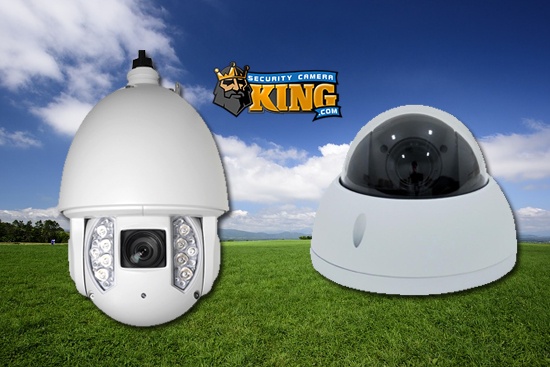How Does CCTV Motion Detection Work
Hi everyone, today we’re covering the question “how does CCTV motion detection work”. We have a fantastic article, and accompanying video for you. as always you’ll get the most information with visual aids by watching the video. You may be familiar with using motion detection in your cameras. Motion detection is an amazing feature that can be used by just about any recorder or camera we carry. This is true for both DVRs and COAX cameras, as well as NVRs and IP cameras. We want to share with you the several benefits of having cameras that utilize motion detection, but first, let’s learn a little bit more about how motion detection works. This is not a setup guide, so much as an explanation of what’s happening when you use motion detection.
How Does CCTV Motion Detection Work? I – The Basics
The goal behind motion detection is fairly simple and somewhat self-explanatory. If within a camera’s field of view there is an object that moves, the camera will know that it is moving and this can trigger several possible reactions from the recorder connected to that camera. But how does it do this? Well, the idea behind it is fairly straightforward. As you may already know, the camera’s field of view is divided into pixels. Pixels are the small dots or points on a screen or image that make up the picture together. As a camera takes in a fixed view from any given scene, most of those pixels are going to remain relatively the same.
For example, the floor and walls, as well as street signs, poles, and buildings aren’t often going to suddenly move. There may be subtle changes such as shadows, and lighting over time, but these are slow and gradual. Now if in that same scene a car or a person walks through, this is a sudden and more chaotic change in the pixels in the scene than say daytime slowly turning into the night time. This sudden change in pixels could be considered a motion event.
Additionally, there are three important settings when it comes to motion detection that determines the tipping point at which the change in pixels is considered different enough to be considered a ‘motion event’ These are Called sensitivity, threshold, and anti-dither.
How Does CCTV Motion Detection Work? II – Areas, and Senseititivty
When you create a region, you can see that it is divided into small subsections like a grid. We will call Each grid square an ‘area’, which is made up of pixels in the scene. Sensitivity is a setting that represents how much or little change needs to be occurring in an individual ‘area’ to count that area as ‘being in motion’. The lower the sensitivity number is set, the more motion or changes in one of these areas are ignored, the higher the number, the more easily it will consider changes motion.
How Does CCTV Motion Detection Work? III – Region, and Threshold
This brings us to the threshold setting. When you create a region, as mentioned before this is made up of the smaller grid squares, or areas. The threshold determines what percentage of the region’s total number of areas have to be experiencing motion in order for the camera to consider this a motion event. For example, if your region is 4×4 for a total of 16 areas, and you had your threshold set to 50, then it would take at least 8 of the 16 areas, or 50% of them, to be experiencing motion in order to count the trigger.
How Does CCTV Motion Detection Work? IV- Anti Dither
Another setting you can change is the anti dither. Anti dither is a timer, between 0 and 100 seconds that starts once both the sensitivity and then threshold criteria have been met. If you have an anti dither set to 5 seconds like it is by default, then 5 seconds will have to pass before an event that is triggering the sensitivity and threshold settings is considered logged. All three of these settings work together to help you eliminate false alarms.
How Does CCTV Motion Detection Work? V – The Benefits
So now we know a lot more about what motion detection is, and what the settings mean. So what are the benefits of motion detection? First – is identifying suspicious activity in the moment. Motion detection is useful for logging changes in a scene so that you can receive a notification on your phone, or via email if an event happens. Next is the ability to more easily find footage later. When motion footage is captured, it is logged in the recorder’s playback and export areas by indicating a particular color on the seek bars. Usually, this is yellow, different from the standard green on a normal non-motion tagged recording. This makes finding footage that might have an event in it simpler, and faster. Lastly, is saving recording space. You can have your cameras programmed to record only on the motion at certain, or all times of the day. This reduces the amount of data consumed on the hard drive by drastically reducing the amount of time your cameras spend recording.
Thanks for joining us today as we answered: “How Does CCTV Motion Detection Work?” If you enjoy our videos or find them helpful don’t forget to toss us a like and subscribe for more content. For more info on our products, availability, compatibility, or technical support, give us a call at
Related: How to terminate and test Ethernet Cable
Related: What’s the difference between DVR and NVR?
Related: What’s the difference between H264 and H265?
Related: IP PTZ Security Cameras – All There is to Know
Related: Resolution, and why does it matter?
Related: What are active deterrence cameras?
Find Us On: Facebook | Twitter | YouTube











